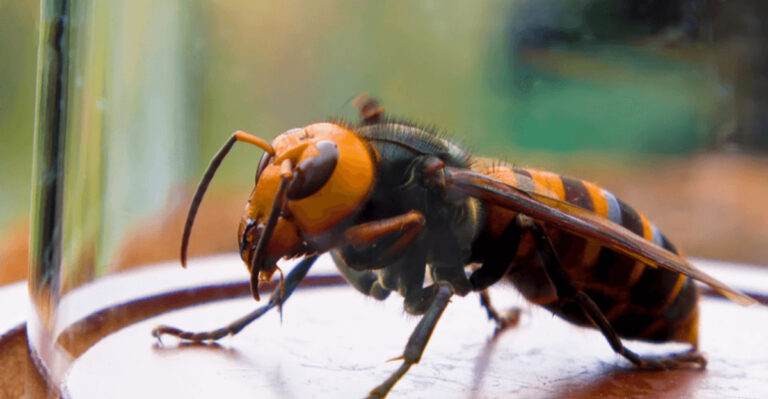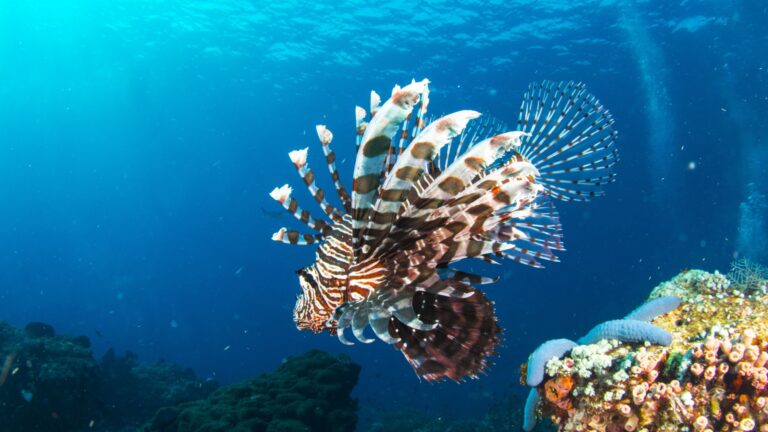Rare Crawfish Lobsters: The Perfect, Unusual Addition To Your Fish Tank

Thinking about adding something different to your home aquarium? Rare crawfish lobsters might be just what you’re looking for!
These fascinating freshwater crustaceans bring vibrant colors and unique behaviors that can transform an ordinary fish tank into an underwater showcase.
Unlike typical fish, these mini-lobsters actively reshape their environment, creating an ever-changing aquatic landscape that’s both entertaining and beautiful to watch.
What Makes Rare Crawfish Lobsters So Unique

Sporting miniature versions of their ocean cousins’ claws and armor, crawfish lobsters stand out in the freshwater aquarium world. Their exoskeletons come in spectacular varieties – electric blues, fiery oranges, and even marbled patterns that can’t be found in regular aquarium fish.
These little creatures are environmental engineers too! They constantly rearrange tank decorations, dig burrows, and create tiny hills from substrate.
Unlike fish that simply swim around, crawfish actively interact with their surroundings. Many species also glow under special aquarium lighting, creating an otherworldly effect in your tank at night.
A Freshwater Crustacean With Stunning Colors
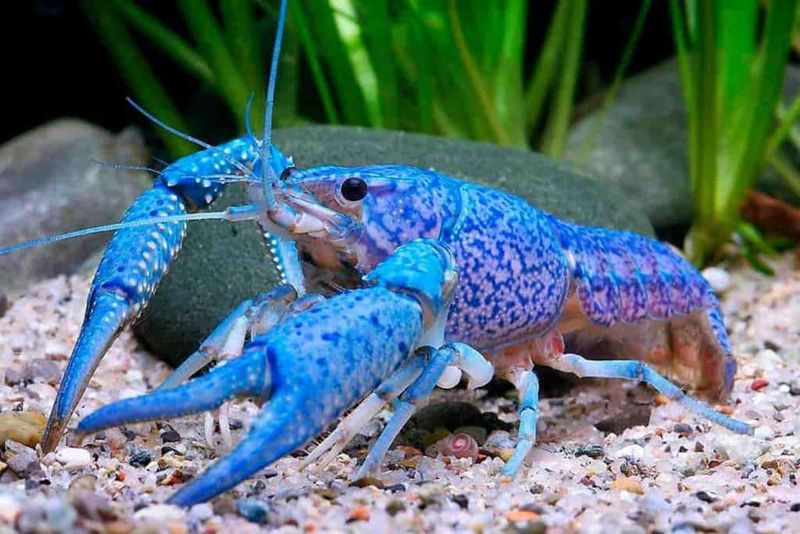
The color palette of rare crawfish lobsters rivals any saltwater reef tank. Electric blue varieties shine like living sapphires under aquarium lights.
Orange morphs resemble tiny flames dancing along the tank bottom. Some even display striking patterns of white stripes against cherry-red bodies. Color intensity often increases after each molt, with young specimens developing more vibrant hues as they mature.
The Mexican Dwarf Orange crawfish showcases a particularly intense orange that seems to glow from within. Unlike fish whose colors fade in captivity, many crawfish species actually become more vibrant when properly cared for in home aquariums!
How Big Do These Lobsters Get In Captivity
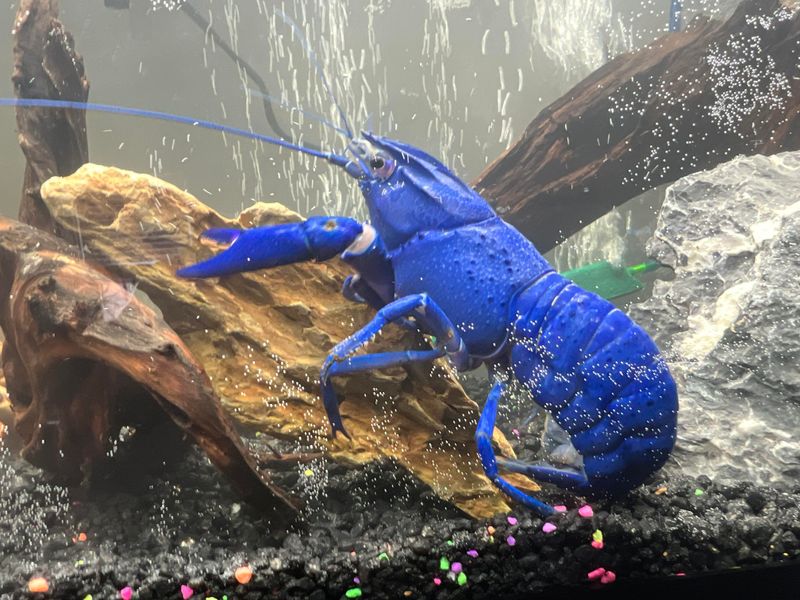
Most aquarium crawfish species reach between 2-4 inches in body length, with their impressive claws adding another inch or so. The popular Electric Blue can grow slightly larger, maxing out around 5-6 inches in ideal conditions.
Dwarf varieties stay conveniently small, rarely exceeding 2 inches total length. Mexican Dwarf Orange and Brazos Dwarf crawfish make perfect additions to smaller setups where space is limited. Growth happens in spurts following molting periods rather than continuously.
A young crawfish might double in size after shedding its old shell! Proper diet and water conditions significantly impact their final size – well-fed specimens in spacious tanks often reach the upper end of their size potential.
Why Their Behavior Sets Them Apart From Other Tank Mates
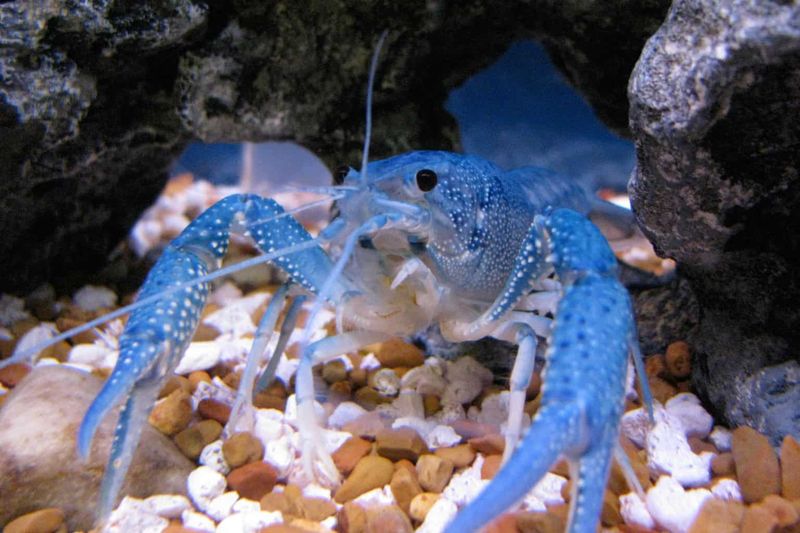
Crawfish lobsters are the busy contractors of the aquarium world! They spend hours digging elaborate tunnel systems, constructing miniature caves, and rearranging decorations to their liking. Watch in amazement as your aquascape transforms overnight.
Their feeding behavior is equally fascinating – rather than simply gulping food, they use their specialized claws to tear, shred and precisely manipulate each morsel. Some species even “wave” their claws in territorial displays that resemble tiny underwater boxing matches.
Unlike most fish that follow predictable swimming patterns, crawfish exhibit problem-solving abilities. They’ll work persistently to reach food or explore new tank additions, showing surprising intelligence for invertebrates.
Tank Size Matters: Giving Your Lobster Room To Roam

A 10-gallon tank works as the absolute minimum for a single small crawfish, but 20+ gallons provides the space they truly need to thrive. These active creatures explore every inch of their territory, making larger tanks much better for their natural behaviors.
Floor space matters more than height! Since crawfish spend most time walking rather than swimming, a longer, wider tank beats a tall narrow one. A 30″×12″ footprint gives ample room for tunneling and exploring.
Multiple crawfish require significantly more space – add at least 10 gallons per additional specimen. Without adequate territory, they’ll become stressed and potentially aggressive toward each other.
Ideal Water Conditions For A Healthy Crawfish Lobster
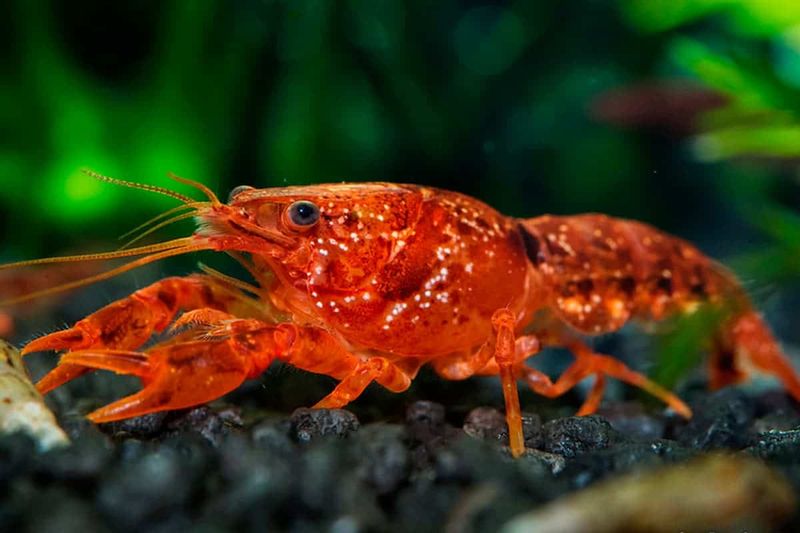
Crawfish thrive in slightly alkaline water with a pH between 7.0-7.8. Temperature preferences range from 65-75°F for most species, making them perfect for unheated tanks in many homes. No need for expensive heaters!
They’re surprisingly tolerant of different water hardness levels but prefer moderate to high mineral content. Adding crushed coral or limestone to the substrate helps maintain optimal conditions.
Good filtration is essential since crawfish produce significant waste. Aim for filters rated for tanks twice your actual size.
Despite their hardy nature, crawfish are sensitive to ammonia and nitrites, so regular water testing and 25% weekly water changes keep them healthy and vibrant.
What To Feed Your Lobster For Proper Growth

Crawfish lobsters are nature’s perfect garbage disposals! Their omnivorous diet includes sinking pellets, blanched vegetables, and occasional protein treats. Zucchini, carrots, and green beans make excellent staple vegetables that won’t quickly foul your water.
For protein, small pieces of uncooked shrimp or fish, bloodworms, and specialized invertebrate pellets support healthy growth and vibrant coloration.
Many hobbyists notice more intense colors when feeding high-quality, carotenoid-rich foods like Hikari Crab Cuisine.
Feed small amounts daily, removing any uneaten food after a few hours. Overfeeding leads to poor water quality faster than almost any other aquarium mistake!
Do Crawfish Lobsters Get Along With Other Fish?
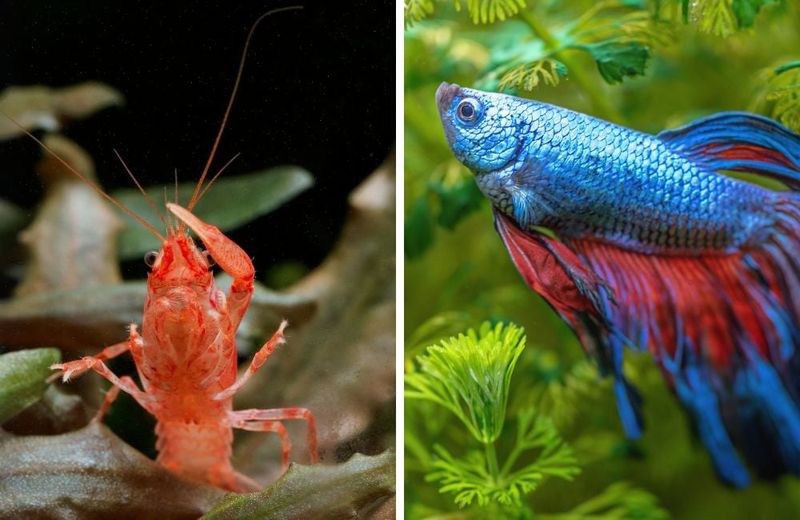
Crawfish have earned their reputation as opportunistic predators! Slow-moving, bottom-dwelling fish often become midnight snacks for these crafty crustaceans.
Fast swimmers that stay in the middle or upper water column generally remain safe from their hunting claws. Larger, aggressive fish like cichlids might turn the tables and harass your crawfish, especially during vulnerable molting periods.
Peaceful community tanks rarely work well unless the fish are significantly faster than the crawfish. The safest approach? Keep crawfish in species-only tanks or pair them with quick mid-water swimmers like danios and tetras.
Avoid expensive fish and delicate species with long fins that might tempt even the most well-fed crawfish!
Understanding Molting And What It Means For Their Health
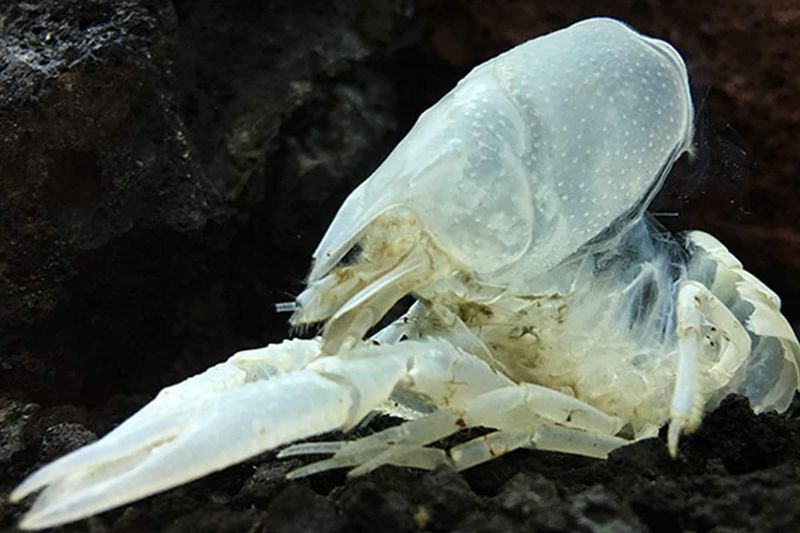
Molting transforms your crawfish from vulnerable soft-body to armored tank in just days! This remarkable process involves completely shedding their old exoskeleton to allow for growth. Before molting, crawfish often hide and stop eating – perfectly normal behavior.
After shedding, they appear ghostly white and extremely soft. During this critical 2-3 day period, they absorb water to expand their body size before their new shell hardens. Extra calcium from foods or supplements helps strengthen the new exoskeleton.
Never remove the discarded shell from the tank! Crawfish often eat their old exoskeletons to recycle valuable minerals.
Frequent molting (every few weeks) indicates a juvenile specimen, while adults might molt only 2-3 times yearly.
Creating Hiding Spots To Help Them Feel Safe
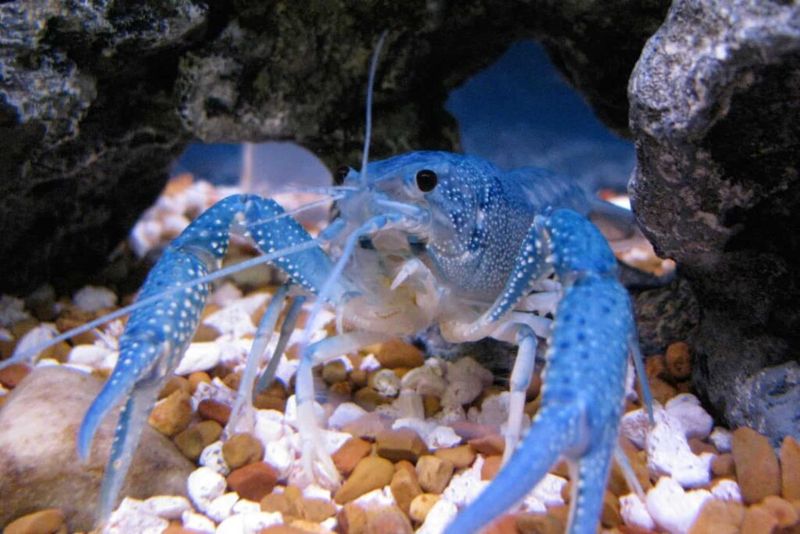
PVC pipes make perfect crawfish condos! Cut 2-3 inch diameter pipes into 4-6 inch lengths and partially bury them in the substrate at different angles.
These artificial caves provide security without sharp edges that might harm your pet during molting. Natural hiding options include smooth river rocks arranged into cave formations. Avoid stackable decorations that crawfish might topple, potentially injuring themselves.
Pre-made ceramic structures designed for aquariums work well too. Plant choices matter – hardy species like Anubias and Java fern attached to rocks survive the constant rearranging better than rooted plants.
Floating plants create shaded areas below, adding another layer of security for your crawfish to enjoy.
How Often Should You Clean Their Tank
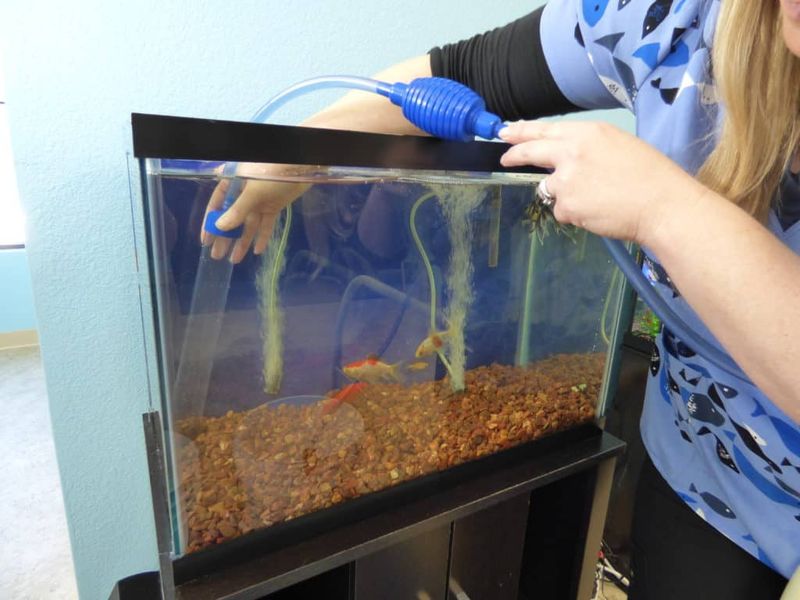
Weekly water changes of 20-25% prevent waste buildup while maintaining beneficial bacteria. Unlike fish-only tanks, crawfish habitats accumulate food particles and molting remains that can quickly degrade water quality.
Monthly substrate vacuuming helps remove debris from the bottom without disturbing their carefully constructed burrows. Focus on open areas rather than disrupting their underground networks. Replace evaporated water with dechlorinated water that matches the tank’s temperature.
Filter maintenance requires special attention – rinse filter media in old tank water, never tap water! This preserves beneficial bacteria colonies.
Clean intake tubes monthly to prevent clogging from plant matter and food particles that crawfish often push around.
Common Mistakes To Avoid When Keeping One At Home
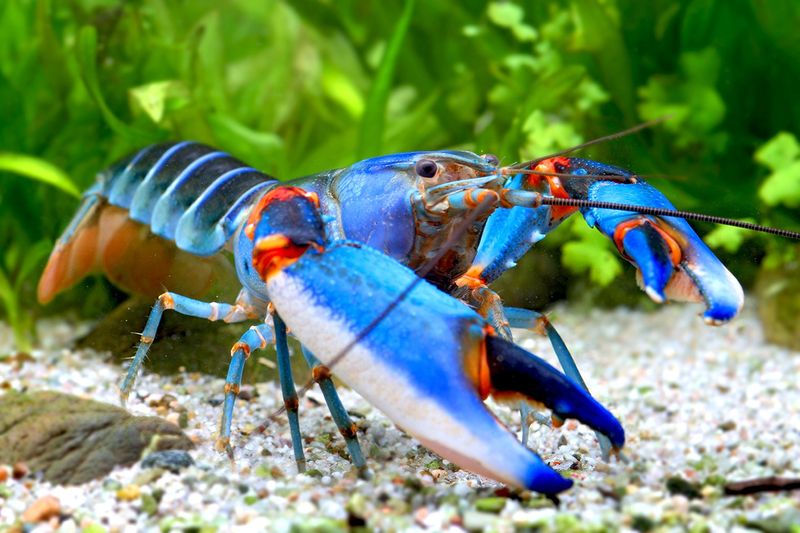
Copper is kryptonite to crawfish! Many medications and some tap water sources contain copper that can be lethal to these invertebrates. Always use invertebrate-safe treatments and test for copper if your crawfish show unexplained health issues.
Skipping water conditioner spells disaster. Chlorine and chloramines in tap water harm crawfish even faster than they affect fish. Let aggressive specimens live alone – housing multiple males usually leads to territorial battles and lost limbs.
Avoid tanks with small gaps around equipment or lids. These escape artists can squeeze through tiny openings and survive surprisingly long periods outside water.
Their determined climbing abilities have earned them the nickname “mini-Houdinis” among experienced keepers!

